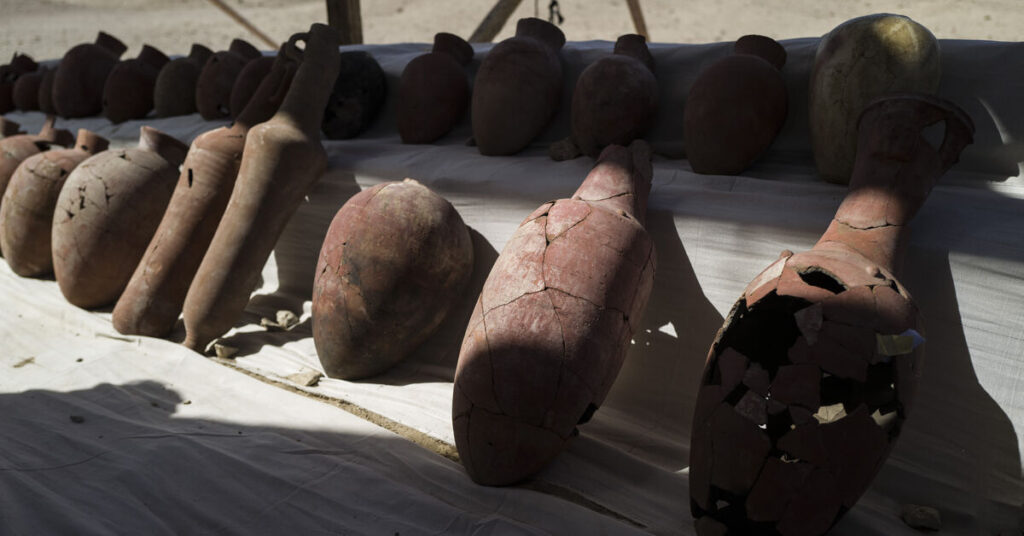New Discoveries Found Under Demolished Historic Palace In Egypt – Al-Monitor
An Egyptian archaeological mission working on the site of the Tawfiq Pasha Andraos Palace – which was recently demolished – unveiled a number of amphoras and lamps dating from the Byzantine era.

Mustafa Waziri, secretary-general of the Supreme Council of Antiquities, said on October 17 that the find is part of a series in the city of Luxor, in southern Egypt. He said excavations were underway at the site.
In August, Egyptian authorities demolished the 120-year-old Tawfiq Pasha Andraos Palace near the Luxor Temple and overlooking the Nile, based on a decision by the Ministry of Antiquities that archaeological sites lay beneath it.
The palace hosted Saad Zaghloul, leader of the 1919 revolution after British authorities banned his travel. It contained many rare items and a gold-plated car, among other valuables. In 2013, the bodies of Andraos’ two daughters, killed in mysterious circumstances, were found inside the palace.
The palace of Andraos, which was a member of the Luxor House of Representatives from 1921 to 1935, is not the first to be demolished by the Egyptian authorities. In 2009, the Mubarak government destroyed the nearby palace of Yassa Andraos, Tawfik’s brother, as part of a plan to turn Luxor into an open museum.
But the move was controversial. “Even the Louvre museum has monuments underneath and has never been demolished,” Bassam al-Shammaa, Egyptologist and tour guide, told Al-Monitor.
“Nothing justifies destroying antiquity for the good of another, especially since Egypt has witnessed successive historical civilizations. It is simply unthinkable to demolish antiquity because there is another in below.
Shammaa added that Luxor Palace has located a short walk from famous Roman monuments opposite the first western edifice of Luxor Temple.
The most famous monument belongs to Emperor Hadrian and is dedicated to the god Serapis, whose statue can be found in the northwest corner of the Luxor Temple courtyard, very close to the Andraos Palace. The Roman monument, according to Shammaa, was built in AD 126.
Ahmed Amer, an archaeological researcher at the Egyptian Ministry of Antiquities, said the finds marked a new stage for archaeology.
Recent findings, he said, offer new details about the lives of ancient Egyptians, both religious and secular. He mentioned a large and varied amount of antiquities that have been discovered in the Saqqara area, south of Cairo, in recent years.
Moreover, in the city of Luxor was found the lost city or the “City of Gold”, Amer added. All the antiquities discovered stimulate both science and tourism, he said, and many archaeological finds are scientifically examined but not presented to tourists.
Other recent finds under Tawfik Pasha Andraos Palace, Amer said, include a set of Roman bronze coins, part of a Roman-era wall, and an ancient storehouse. Lamps are made of different materials, and pottery is probably the most common, he said.
According to Amer, the lamps are dishes filled with oil and salt, on which floats a wick. These lamps often depicted various scenes from everyday life, images of animals and altered plant motifs. The oil is placed in the centre hole of the dish for lighting, with the wick protruding from a front hole.





